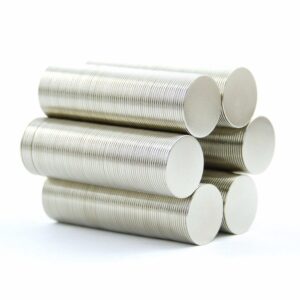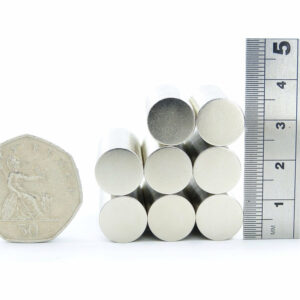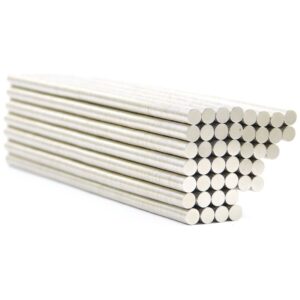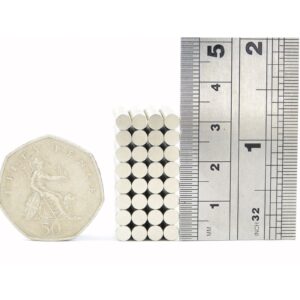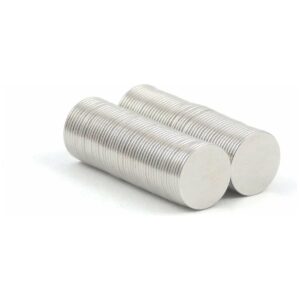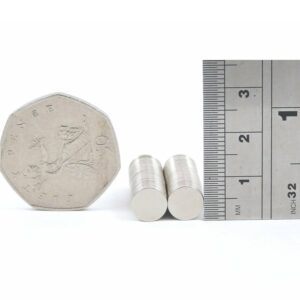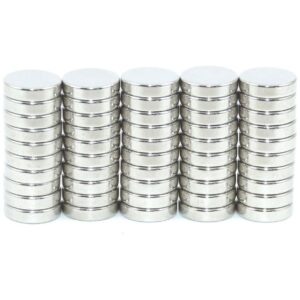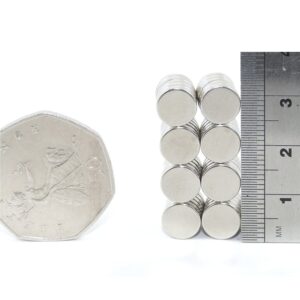If you’ve heard of neodymium magnets before, chances are you may have read about them in a news article or seen them in a viral video. They’ve had some unfortunate media attention in the past, where these incredibly strong magnets have gotten into the wrong hands, haven’t been handled correctly or have even caused accidents. But are neodymium magnets dangerous?
Fundamentally, they are perfectly safe to be handled. Like any other magnet they do have their risks, but when used correctly there’s no need to worry about them being dangerous. Their unrivalled strength gives them the potential to be used in so many different ways, including for various home projects or even around the workplace. They’re also a crucial component in many technological devices, some of which you use on an almost daily basis. So don’t write them off just yet!
The best way to feel confident using these magnets, is to understand the risks involved and how to protect yourself from them and properly handle them. Let’s first take a look at some of the most popular concerns and hazards related to using neodymium magnets:
They can break or chip
If held too close together – like most magnets – their magnetic forcefield means they will snap together. But because these super-strength magnets aren’t just your usual magnet, they can snap together from quite a distance, with quiet some force. This can cause their naturally brittle exterior to chip off or splinter, causing dangerously sharp, small slices of metal to be sent flying into the air.
Can be swallowed by small children
Neodymium magnets are available in a range of shapes and sizes, they’re quite commonly available in small sphere or circular designs. Due to the small size of these magnets, they can pose a potential choking/swallow hazard for small children.
Can cause injury
These magnets really do have an unparalleled strength, especially for their size, so due to their tendency and ability to snap together very quickly, there is potential for them to cause injuries. These can include pinched skin, blood blisters, bruising or fractures.
Not hypoallergenic
Manufactured with a nickel coating, neodymium magnets are not suitable to be handled by everyone. If you have a nickel allergy, direct contact should be avoided. Likewise, if you develop any signs of a reaction, such as redness or itching, after handling neodymium magnets, then it’s advisable to stop contact immediately.
How to safely handle neodymium magnets
Now you have a clear understanding of the potential dangers attached to these super-strength magnets, let’s take a look at how these accidents can be avoided. If you’re hoping to use neodymium magnets for your project, then we’d advise following the below steps to eliminate any of the above risks.
- Wear gloves
Always wear protective gloves when you’re handling these magnets, to prevent your fingers from getting pinched in between magnets. Gloves are also useful in preventing a reaction to the nickel coating of the magnet. - Always supervise children
Children should never be left to play with them unsupervised. Not only could they cause an injury, but they also pose a choking hazard. - Wear safety glasses
It’s crucial to wear safety glasses when using neodymium magnets, this is due to the risk of small splinters of metal potentially flying into the air if the magnets do strike together. - Keep magnets away from sensitive objects
There are particular types of items you’ll want to keep your strong neodymium magnets away from. Any already magnetised objects, including credit cards, mobile phones, pacemakers, and more. This is because they can interfere with the inner workings of these devices.
We hope you now feel reassured that neodymium do not need to be dangerous, so long as you follow the right steps when handling them. They’re a fascinating magnet, with an incomparable strength, which can be incredibly useful for a wide variety of tasks. We’re passionate about promoting their safe use. If you’re ready to start using them around the home, or at work, shop our selection of neodymium magnets today. Or if you want to learn a little bit more about neodymium magnets, where they’re most frequently used and to find out more about how strong they actually are, then take a read of our What Are Neodymium Magnets? blog post.

